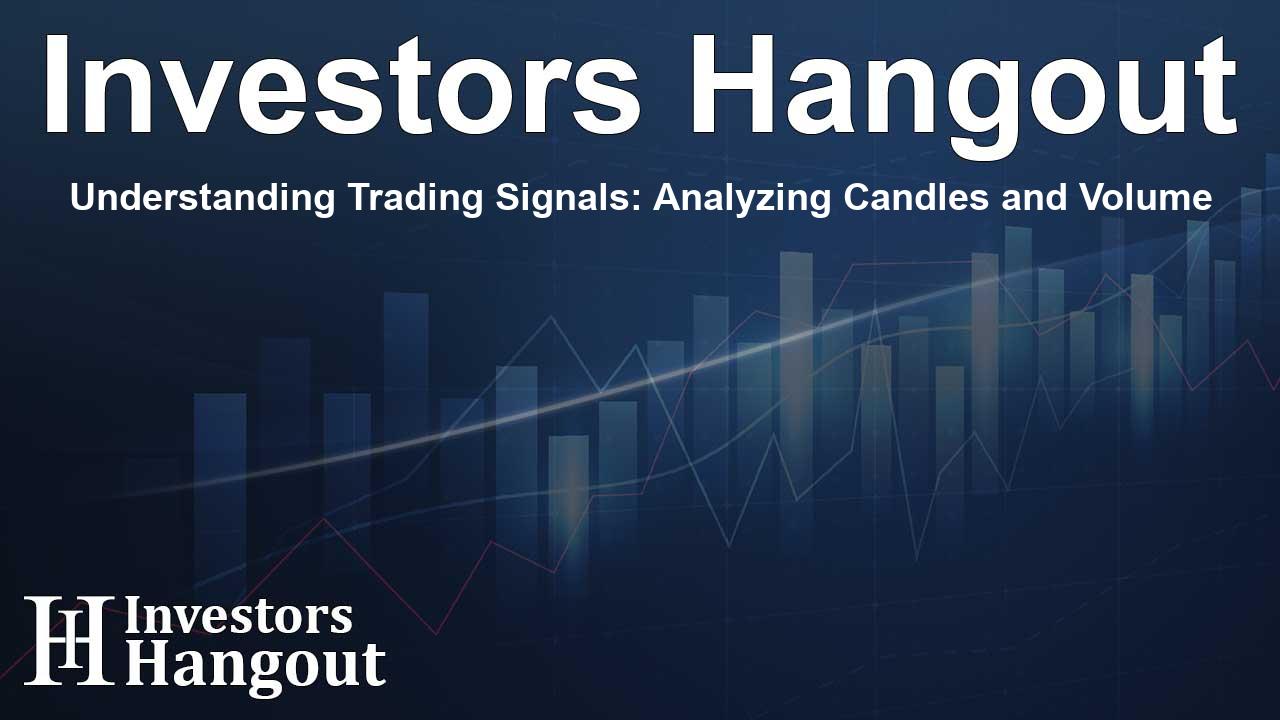Understanding Trading Signals: Analyzing Candles and Volume

Understanding Trading Signals
In the realm of trading, identifying anomalies in price and volume is crucial. This knowledge can significantly enhance your trading strategies. Today, we delve into how to effectively spot these anomalies using Volume Price Analysis (VPA).
Importance of Candlestick Patterns
Candlestick patterns serve as visual representations of price movements in the market. By understanding these patterns, traders can predict future price movements with greater accuracy. For instance, a bullish engulfing pattern may indicate a potential price increase, while a bearish engulfing pattern could suggest a decline.
Analyzing Stock Examples
Real-world examples help in understanding the application of VPA. Take, for instance, Palantir (NASDAQ: PLTR). By analyzing its candlestick patterns, traders can gauge market sentiment and decide when to enter or exit positions. Similarly, observing Broadcom (NASDAQ: AVGO) during high volume spikes can highlight significant market interest.
Volume Price Analysis in Depth
Volume Price Analysis focuses on the relationship between volume and price levels, guiding traders in determining support and resistance levels. Increased volume can often lead to price breakouts or reversals. Thus, it is essential to evaluate this relationship across different timeframes. For instance, during a swift price rise, if volume is also increasing, it may confirm the strength of the upward movement.
Real-Time Analysis with Tesla
Examining Tesla (NASDAQ: TSLA), we notice how sudden volume changes can influence price action. For example, when a spike in trading volume occurs, it may precede significant news or events concerning the company, prompting traders to act swiftly before the market adjusts.
Key Takeaways for Traders
To effectively utilize volume and candlestick analysis, traders must continually educate themselves and analyze data. Emphasizing discipline and a solid understanding of market signals can lead to improved decision-making. Incorporating these strategies will not only refine your trading skills but also enhance your ability to navigate the markets with confidence.
Frequently Asked Questions
What is Volume Price Analysis (VPA)?
Volume Price Analysis is a method used to interpret price movements and trading volume, identifying trends and potential market reversals.
How do candlestick patterns help in trading?
Candlestick patterns provide visual cues about market sentiment, helping traders make informed decisions based on price behavior.
Why is understanding volume important?
Understanding volume is crucial as it can confirm or refute price movements, indicating potential strength or weakness in a trend.
Can the same analysis apply to different timeframes?
Yes, analyzing candlestick patterns and volume across various timeframes can provide a comprehensive view of market dynamics.
How can I improve my trading strategies using these tools?
By mastering VPA and candlestick analysis, you can better interpret market signals and make more strategic trading decisions.
About The Author
Contact Hannah Lewis privately here. Or send an email with ATTN: Hannah Lewis as the subject to contact@investorshangout.com.
About Investors Hangout
Investors Hangout is a leading online stock forum for financial discussion and learning, offering a wide range of free tools and resources. It draws in traders of all levels, who exchange market knowledge, investigate trading tactics, and keep an eye on industry developments in real time. Featuring financial articles, stock message boards, quotes, charts, company profiles, and live news updates. Through cooperative learning and a wealth of informational resources, it helps users from novices creating their first portfolios to experts honing their techniques. Join Investors Hangout today: https://investorshangout.com/
The content of this article is based on factual, publicly available information and does not represent legal, financial, or investment advice. Investors Hangout does not offer financial advice, and the author is not a licensed financial advisor. Consult a qualified advisor before making any financial or investment decisions based on this article. This article should not be considered advice to purchase, sell, or hold any securities or other investments. If any of the material provided here is inaccurate, please contact us for corrections.
